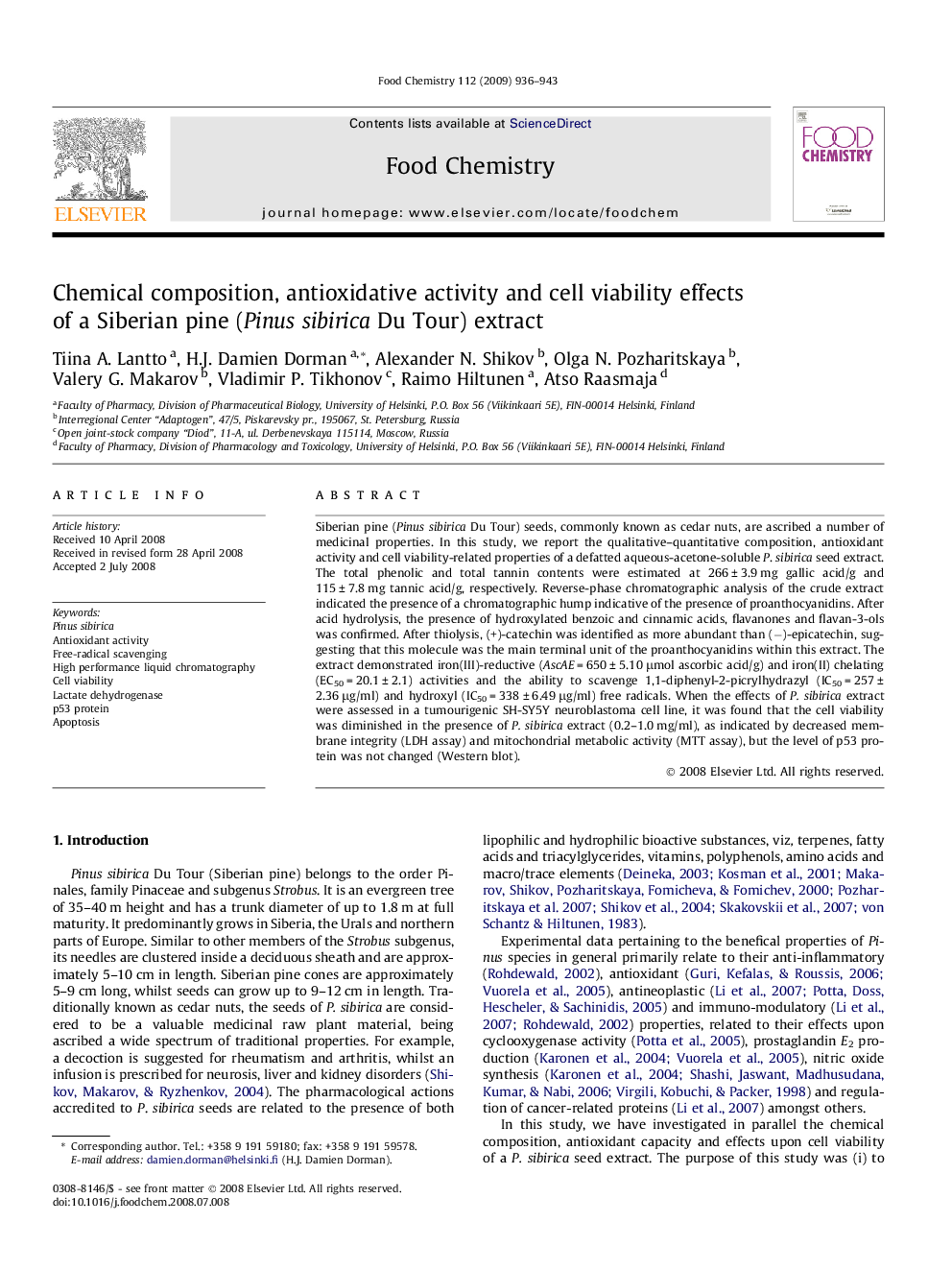| Article ID | Journal | Published Year | Pages | File Type |
|---|---|---|---|---|
| 1186554 | Food Chemistry | 2009 | 8 Pages |
Siberian pine (Pinus sibirica Du Tour) seeds, commonly known as cedar nuts, are ascribed a number of medicinal properties. In this study, we report the qualitative–quantitative composition, antioxidant activity and cell viability-related properties of a defatted aqueous-acetone-soluble P. sibirica seed extract. The total phenolic and total tannin contents were estimated at 266 ± 3.9 mg gallic acid/g and 115 ± 7.8 mg tannic acid/g, respectively. Reverse-phase chromatographic analysis of the crude extract indicated the presence of a chromatographic hump indicative of the presence of proanthocyanidins. After acid hydrolysis, the presence of hydroxylated benzoic and cinnamic acids, flavanones and flavan-3-ols was confirmed. After thiolysis, (+)-catechin was identified as more abundant than (−)-epicatechin, suggesting that this molecule was the main terminal unit of the proanthocyanidins within this extract. The extract demonstrated iron(III)-reductive (AscAE = 650 ± 5.10 μmol ascorbic acid/g) and iron(II) chelating (EC50 = 20.1 ± 2.1) activities and the ability to scavenge 1,1-diphenyl-2-picrylhydrazyl (IC50 = 257 ± 2.36 μg/ml) and hydroxyl (IC50 = 338 ± 6.49 μg/ml) free radicals. When the effects of P. sibirica extract were assessed in a tumourigenic SH-SY5Y neuroblastoma cell line, it was found that the cell viability was diminished in the presence of P. sibirica extract (0.2–1.0 mg/ml), as indicated by decreased membrane integrity (LDH assay) and mitochondrial metabolic activity (MTT assay), but the level of p53 protein was not changed (Western blot).
